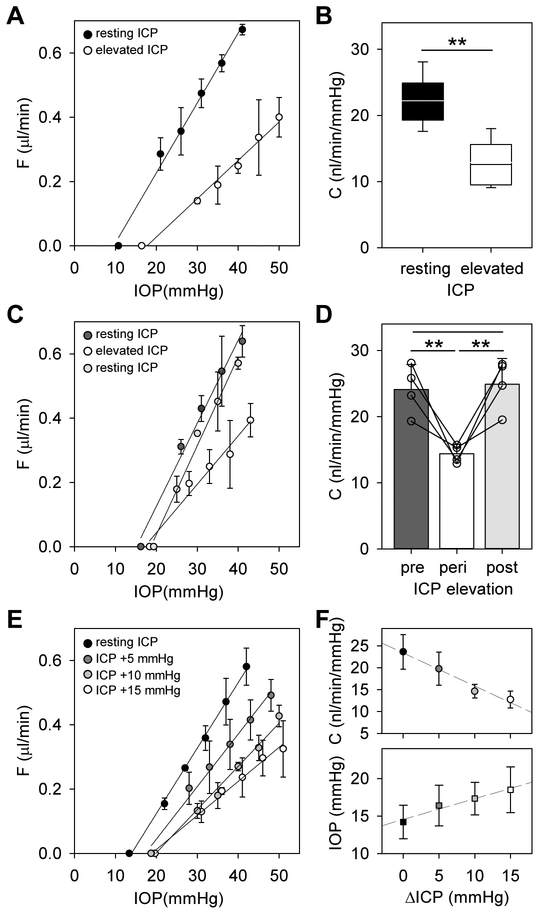Figure 3.
Impact of ICP elevation on conventional outflow facility. A, Pressure-flow data of a rat eye at resting ICP of 4 mmHg (black symbols) and at ICP raised to 19 mmHg (white symbols). Data regression fits (lines) estimate C of 22 [20-24] and 12 [9-15] nl/min/mmHg, respectively. B, Summary of C data for all animals at resting ICP and 15 mmHg above resting ICP (n = 18). Box-and-whiskers plot median, 10th, 25th, 75th, and 90th percentiles. C, Pressure-flow data of a rat eye pre- (black symbols), peri- (white symbols), and post- (gray symbols) ICP elevation of 15mmHg. Data regression fits (lines) estimate C of 24 [20-28], 14 [10-17], and 25 [21-30] nl/min/mmHg, respectively. D, Average C for the subset of animals tested pre-, peri-, and post-ICP elevation (n = 4). E, Pressure-flow data of a rat eye at resting ICP (black symbols) and 5 (dark gray symbols), 10 (light gray symbols), and 15 mmHg (white symbols) above resting ICP. Data regression fits (lines) estimate C of 24 [20-27] at resting ICP and 19 [13-25], 16 [12-20], and 12 [9-15] nl/min/mmHg for successive ICP increments. F, Average C (circles) and resting IOP (squares) for the subset of animals tested with multiple ICP levels (n = 4). Error bars give standard deviations, and asterisks indicate statistically significant differences (p < 0.01).

